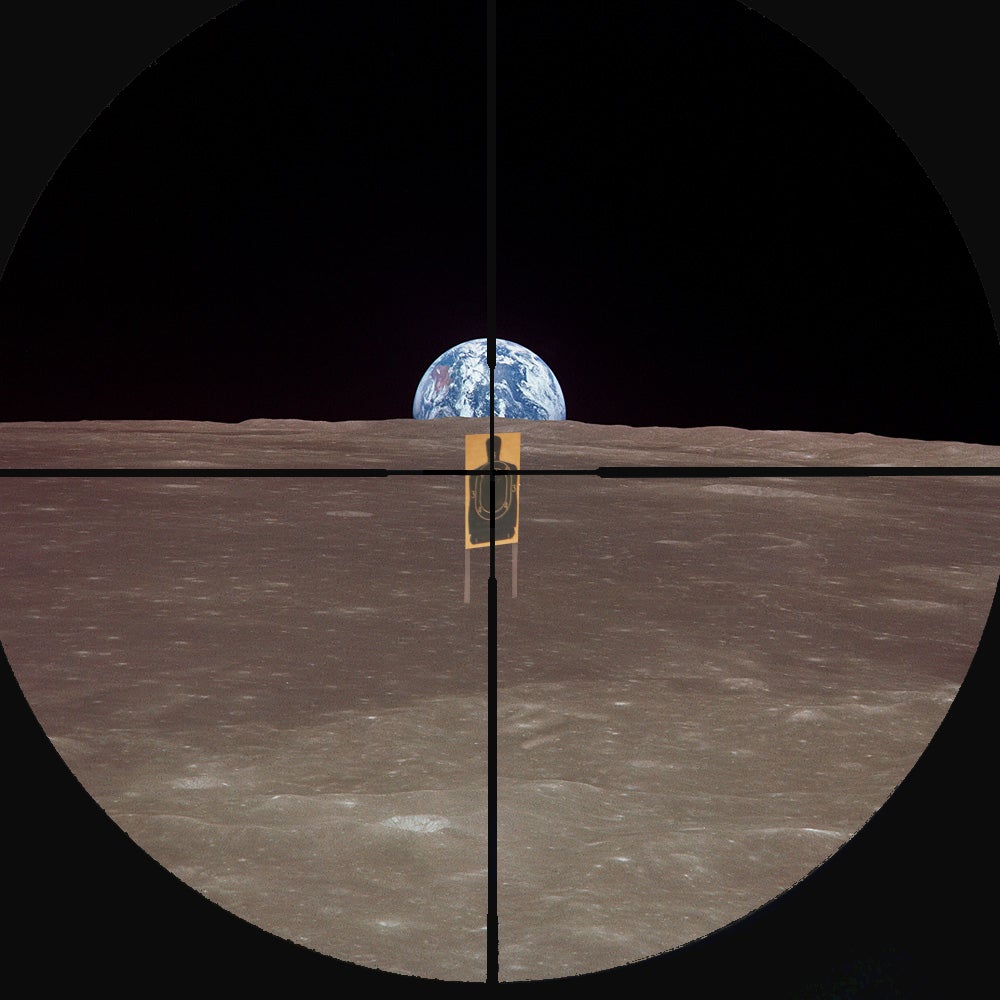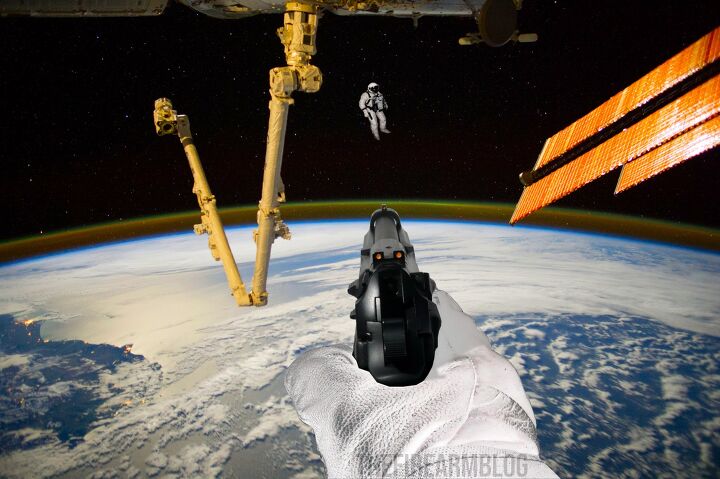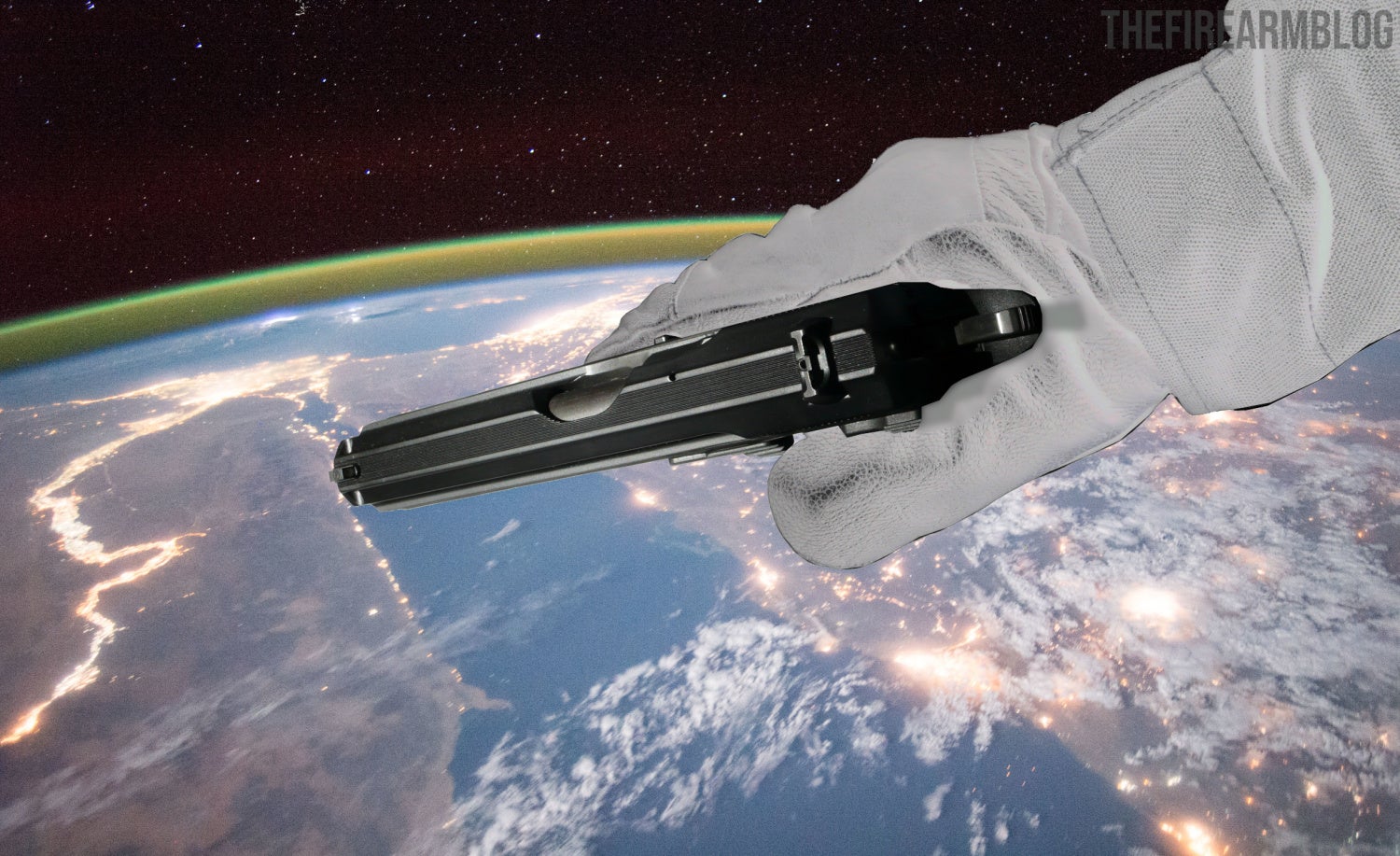Arming the Space Force, the sixth and newest branch of the United States Armed Forces will be an interesting endeavor when it comes to small arms. Naturally, any conventional weapon will be at the Space Force’s disposal while on Earth, but space brings a whole host of issues and challenges when it comes to firing guns in space as I covered in PART 1.
This series is mostly hypothetical and for fun, it will most likely be quite some time before we hear of any space gun trials and acquisitions. In the meantime though, let’s discuss what the Space Force should consider when choosing the official ‘space gun’.

Official Seal of the United States Space Force. Image from Wikipedia.org.
ARMING THE SPACE FORCE: RECAP & ISSUES ADDRESSED BY TFB READERS
In Part 1, I ruled out long guns based on the inability to shoulder one and look down the sights with a large helmet, as well as the added bulk of storing them or slinging them. That leaves us with handguns, specifically, ones that can run dry due to the fact that the extreme temperature swings will either evaporate lubrication or freeze it solid. We also briefly covered the effects of recoil and Newton’s Third Law as it pertains to a spacewalker firing a gun. One interesting tidbit of news in the space race is that the French have planned to arm their satellites with either lasers or machine guns.
There were also a couple other issues that TFB readers addressed. The first issue I had not addressed was defining the mission or battlefield to assist in choosing the official space gun. Honestly, in the case of choosing the space gun, and limiting it to a pistol, defining the battlefield doesn’t really get us much further, especially when storage on the ship and on the person is extremely limited.

Background image credit: Nasa.gov
The other issue addressed by a reader was that “vacuum welding” or “cold welding” is something that can happen in space. Cold welding can occur when there are no air molecules between two different parts of the same material, they can fuse together as one. While this is a thing, it’s not a deal breaker when two different types of metals can be used in conjunction, or by using special coatings as THIS VIDEO from the Veritasium YouTube channel explains.

Background image credit: Nasa.gov. In this rare image taken on July 19, 2013, the wide-angle camera on NASA’s Cassini spacecraft has captured Saturn’s rings and our planet Earth and its moon in the same frame.
ARMING THE SPACE FORCE: CHOOSING THE PROJECTILES
When it comes to choosing the official space gun, one should most likely start with the caliber and cartridge, based on what you want it to do. One consideration I had mentioned is that current space suits already have a certain, thin level of armor to stop really fast micrometeors up to 2mm. It’s a possibility that if some sort of military space race does take place, an up-armoring of soft armor would also be considered. To combat this escalation of armor, I settled on fast, light bullets.
There are several advantages to using fast, lightweight bullets in space. The reduced weight projectiles will have less effect on the shooter’s trajectory while in orbit or deep space compared to heavier bullets. There are currently several cartridges that are known for penetrating soft armor, which would help in creating holes in an enemy’s spacesuit. Those holes are going to cause big problems for enemy space personnel, even if they aren’t injured from the bullet itself. While space has plenty of disadvantages when it comes to shooting guns, one advantage is that once a bullet is fired, it’s not going to slow down. There are certain orbital factors to consider, but within the distance, any bullet would be fired in anger, velocity dropoff should not be an issue.

Author’s rendering of a near future space battle. Background image credit: Nasa.gov, Gemini space suit image from Wikipedia.org.
In choosing an existing cartridge for the Space Force, I’d like to counteract any significant drop in muzzle velocity caused by the extremely low temperatures. I’m more of a “go big or go home” kind of guy, so I lean more towards cartridges that already have a high muzzle velocity such as one of the quickest loads from a pistol, the .22 TCM, over an already proven design of the slower 5.7×28 FN. There are also light-for-caliber options to be had as well, such as Liberty Ammunition’s lightweight 9mm loadings with a 50 grain bullet that boasts a 2000 fps velocity. FK Brno’s 7.5mm is another fast caliber option, with a heavier price tag for reaching the same 2000 fps velocity range. Andrew, with TFB TV reviewed the FK BRNO pistol and tested against some armor as you can see below.
This is not to say that the 5.7×28 or 7.62 Tokarev couldn’t still do the job, but why not spring for faster rounds with no added penalty for doing so (with the exception of cost depending on the chosen make and model). Let us know which cartridge you’d like to see become the official caliber of the Space Force’s sidearm by using the poll below.
AMMUNITION POLL
SELECTING THE GUN OF THE SPACE FORCE
Having narrowed the caliber choices down further, let’s take a brief look at the type of firearm we should be looking for. As I mentioned in Part 1, polymer guns are most likely out due to the extreme heat and cold. I’m not in the habit of putting my Glock’s in the oven, but I’ve seen photographic evidence of what happens when tactical tupperware finds its way into one. I also have my doubts about the durability of a polymer gun when fired at -450 degrees (F). As some TFB readers have mentioned, the ideal space gun most likely hasn’t been produced yet, but I don’t think it’s a far step for any current manufacturer to make one in short order.
For any firearms manufacturers that aspire to produce an actual space gun, it seems that that the ideal space gun for the Space Force should be constructed with a metal frame and slide, either of dissimilar metals or with special coatings, be able to operate without any lube, and be chambered for a lightweight (or light-for-caliber), fast projectile. When it comes to existing designs, what pistol would you like to see get optimized for space? Since we can’t poll for every pistol design in existence, please pick the model you think would be best. However, also feel free to expound on your choice in the comments section below.

Background image credit: Nasa.gov
POLL FOR EXISTING OR MODIFIABLE GUNS

Background image credit: Nasa.gov
ARMING THE SPACE FORCE PART 1
What do you think about arming the Space Force? What specifications or accessories would you like to see included on future space guns? If you voted for one of the more generic options in the existing or modifiable guns in the poll, which model would you like to see turned into a space gun?
 Your Privacy Choices
Your Privacy Choices
